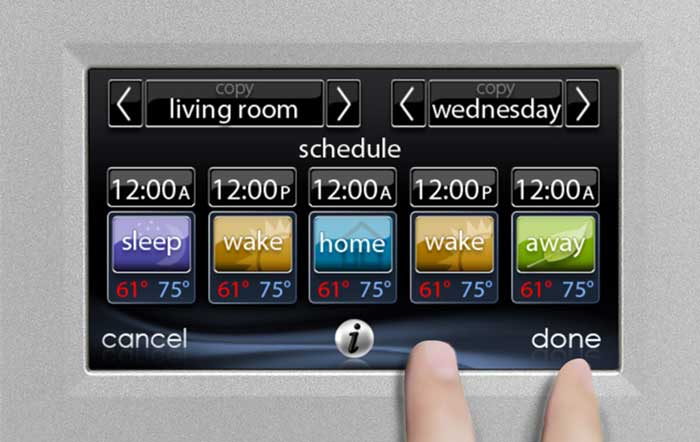The efficiency of air conditioners is often rated by the Seasonal Energy Efficiency Ratio (SEER) which is defined by the Air Conditioning, Heating, and Refrigeration Institute in its 2008 standard AHRI 210/240, Performance Rating of Unitary Air-Conditioning and Air-Source Heat Pump Equipment.
The SEER rating of a unit is the cooling output during a typical cooling season divided by the total electric energy input during the same period. The higher the unit’s SEER rating, the more energy efficient it is. In the U.S., the SEER is the ratio of cooling in British thermal units (BTU) to the energy consumed in watt-hours.
For example, consider a 5,000-British-thermal-unit-per-hour (1,500 W) air-conditioning unit, with a SEER of 10 BTU/W·h, operating for a total of 1000 hours during an annual cooling season (e.g., 8 hours per day for 125 days).
The annual total cooling output would be:
- 5000 BTU/h × 8 h/day × 125 days/year = 5,000,000 BTU/year
With a SEER of 10 BTU/W·h, the annual electrical energy usage would be about:
- 5,000,000 BTU/year / 10 BTU/(W·h) = 500,000 W·h/year
The average power usage may also be calculated more simply by:
- Average power = (BTU/h) / (SEER) = 5000 / 10 = 500 W
If your electricity cost is 20¢/kW·h, then your cost per operating hour is:
- 0.5 kW * 20¢/kW·h = 10¢/h








